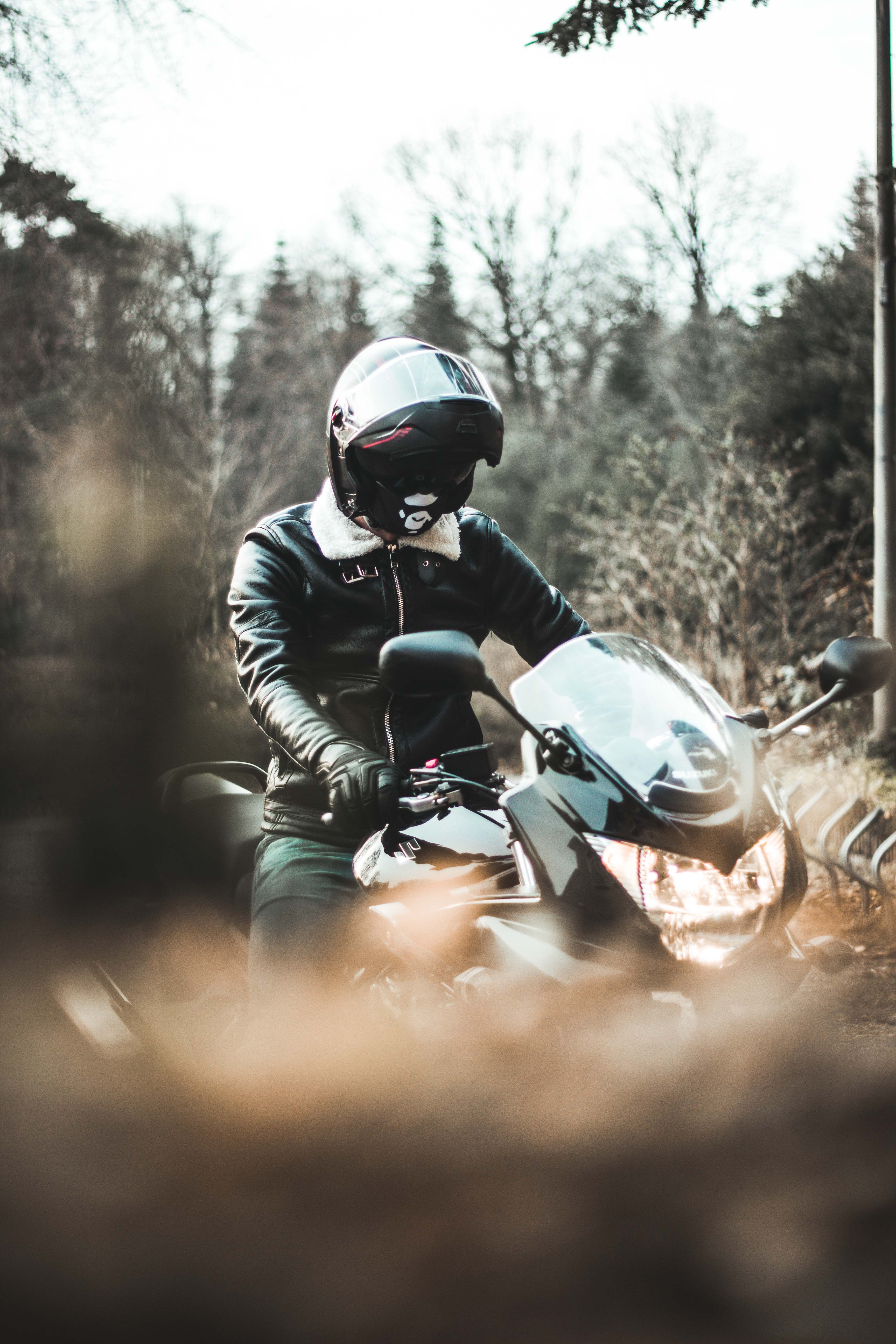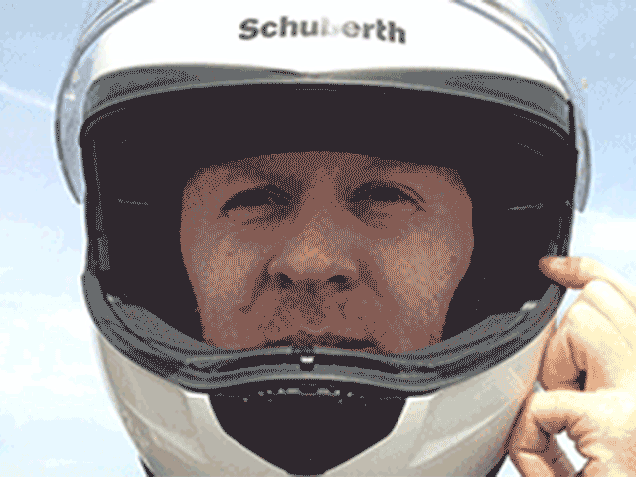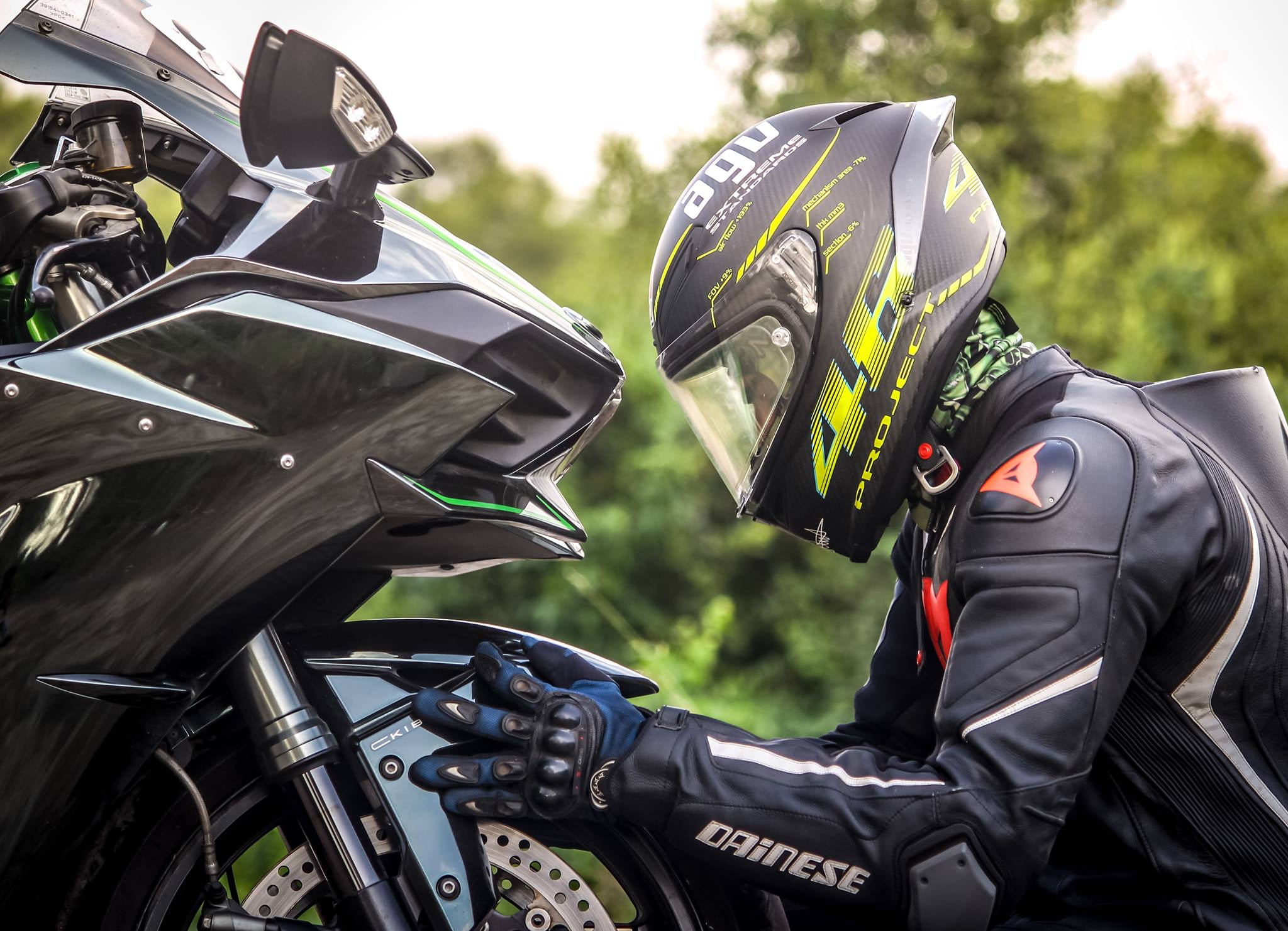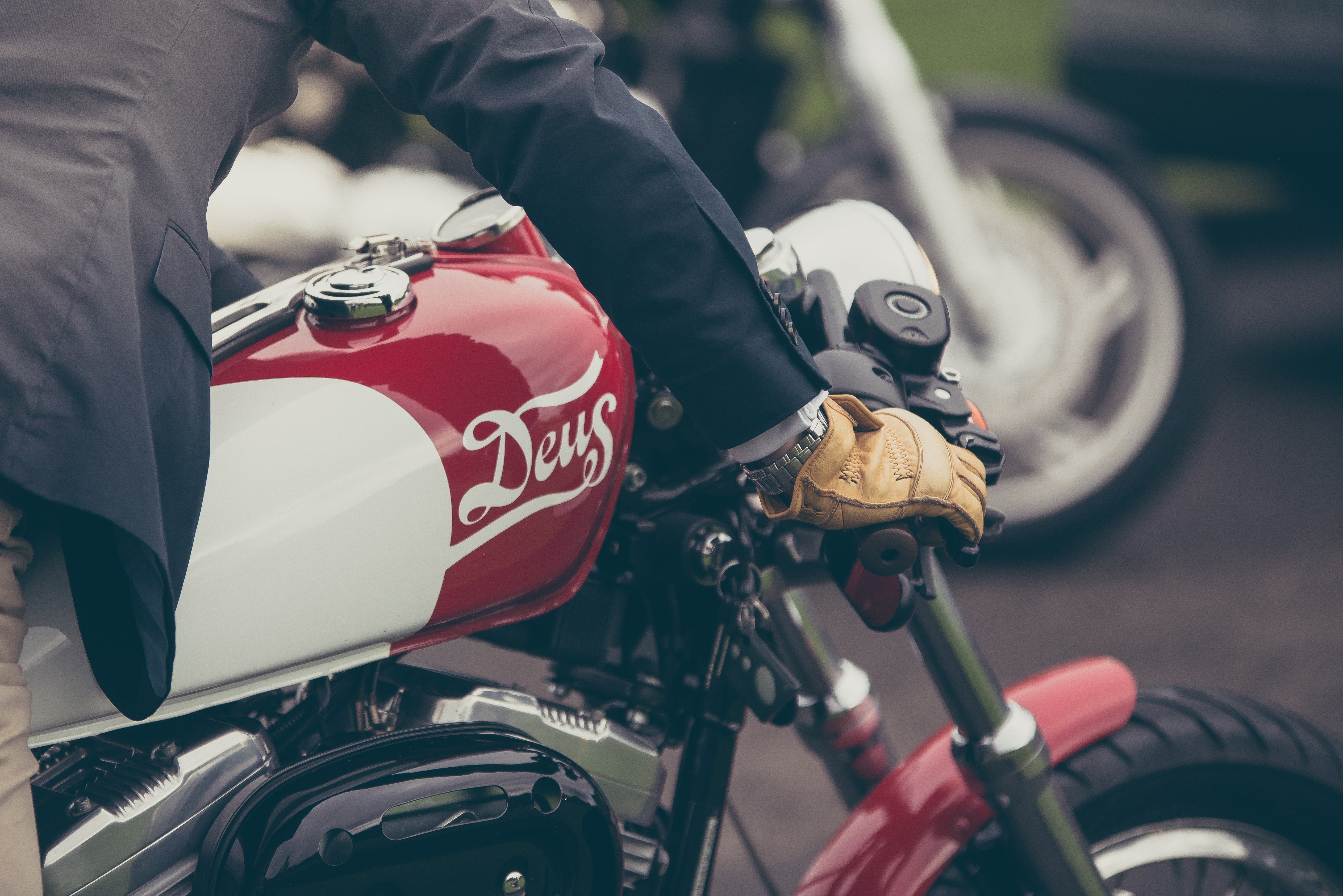More and more people are adopting two-wheeled transportation. In fact, Insurance Bureau of Canada spokesperson, Steve Kee, cites a steady 14% increase in riders on the roads from 2010-2016.That increase comes with a renewed sense of responsibility to ride safely and with confidence.
Tips for riding a motorcycle can range from how to properly shift and use the clutch, to taking corners, safely braking, and making yourself more visible to drivers. These tips can provide riders with the chance to improve their motorcycle riding skills, which then betters the road experience for everyone.
In this post, we’re counting down our top 5 tips for riding a motorcycle.
Look Where You’re Headed
 Riding a motorcycle is all about extending your vision, both mentally and physically. Learning to predict the maneuvers of oncoming and neighbouring drivers helps riders to see what’s coming their way so they can adapt their own course or slow down to avoid trouble.
Riding a motorcycle is all about extending your vision, both mentally and physically. Learning to predict the maneuvers of oncoming and neighbouring drivers helps riders to see what’s coming their way so they can adapt their own course or slow down to avoid trouble.
Practice looking where you’re headed, because if you’re looking at the road directly in front of your motorcycle you may not have time to react to what’s coming your way further ahead. This is particularly useful and important when approaching a corner. Look through the corner and plot your exit course. This will give you the vision to see and react to medians, potholes, other drivers, pedestrians, and even debris that may be on the road.
Not only should you be looking where you’re going, you should also be aware of your surroundings. Scanning intersections as you approach, enter, and proceed through them is vitally important as you cruising, especially if you are in-town amongst heavy traffic.
Further to giving yourself the vision you need to ride safely and more fluidly, using your vision is also a visual clue for drivers and other riders around you. Physically turning your head and making your course of vision known is a signal to others where you’re looking, and where you intend to go. Also, don’t underestimate the power of eye contact. Just like when you’re using the road while driving or walking, making eye contact is an important practice to have. Make eye contact with pedestrians and other motorists whenever you’re making a maneuver that could impact them.
Dress for Success
Dressing the part is about much more than looking cool. There’s a method to the madness of biker fashion, and it’s rooted in safety, comfort, and adaptability.
Threads
Denim may look good, but it does very little to protect a rider from the dangers of friction with asphalt. Get yourself a good quality set of threads, which may include a jacket, pants or chaps, and gloves, to protect yourself from the elements and from the road itself.
Leather jackets have been helping people look good for the past 80 years, but they’ve also been protecting riders from road rash, burns, rain, and the cold as long as motorcycles have been around. Leather does an excellent job of absorbing energy, deflecting heat generated from sliding, and keeping a rider warm during cool highway cruises.
Synthetic materials are also a great option and step-up from denim. As technology advances, more and more materials are being used as motorcycle gear. You will find Kevlar and Cordura Nylon jackets, pants, and gloves available that are more affordable than leather pieces but are protective and durable. Another plus - synthetic threads are often more breathable and comfortable than being decked out in a full set of leathers!
Layers
Dress in layers so you can adjust your attire throughout the course of the day. Being able to take off a sweater and roll with your leather jacket is the perfect refuge for a piping hot afternoon, and make sure to pack an extra thermal layer, or a dry shirt should you run into rain, or cold somewhere on your ride. Being cold can affect your mechanical dexterity while riding, limiting your ability to reach for the brake or clutch during an emergency, so staying warm and comfortable is critical to riding.
Sunglasses
 You can't ride safely, confidently, or even enjoy the scenery, if you can’t see. If you don’t already have a pair, invest in a good set of polarized, UV protected sunglasses that are comfortable and durable. These shades will not only help you look great, but they’ll protect your eyes from the sun, eliminate glare, and enable you to look ahead for potential obstacles and dangers. Many helmets now have built in sunglasses that can be used or put away with the touch of a single button!
You can't ride safely, confidently, or even enjoy the scenery, if you can’t see. If you don’t already have a pair, invest in a good set of polarized, UV protected sunglasses that are comfortable and durable. These shades will not only help you look great, but they’ll protect your eyes from the sun, eliminate glare, and enable you to look ahead for potential obstacles and dangers. Many helmets now have built in sunglasses that can be used or put away with the touch of a single button!
Boots
A good set of riding boots will provide good traction and balance while stopping, and they will also keep your feet warm and dry. They will allow you to avoid the dreaded pain or cramping of shifter-foot when upshifting with the bridge of your left foot. Shifting can scuff up your favourite kicks, so finding a set of dedicated riding boots is a must.
Gloves
We’ve already mentioned the need to keep your hands warm and dry during a ride, in part thanks to manual dexterity, but you’ll also want to protect your hands from sunburn and windburn. Riding gloves are inexpensive, stylish, and protect your hands - the primary connector between you and the bike. Invest in thicker, insulated gloves during the Spring and Autumn months and consider a lightweight, breathable pair for the warmer Summer months.
Pre-Trip Inspections

Get in the habit of conducting a pre-trip bike inspection as an integral part of your riding. Take the time to inspect the mechanical aspects of your bike to help alleviate any concerns that you could run into a mechanical problem down the road, or contribute to a road-going danger later in the day.
Inspect your bikes’ drive power - whether that be a chain, belt, or shaft. If they’re damaged, cracked, or loose, you run the risk of breaking it later. This may mean you’ll just be walking home, but it can also mean unintentionally causing an accident. Chains should be well oiled, free of rust, move freely and consistently. They should also be relatively tight to ensure minimal play in the torque of the bike causing damage to the chain itself.
Check your tires for appropriate air pressure and any visible signs of deterioration, general wear and tear, or cracks, dryness, and leaks. Adjust those mirrors before kicking the bike over so you can leave your driveway with optimal spatial sense. Check all the motorcycles’ lights – head lights, signal lights, brake lights. And your horn! Finally, check all of the necessary fluids before heading out. Get to know where and how to check your bike’s oil reserve, and ensure you’re familiar with the fuel capacity of your bike so you don’t wind up bleeding the tank dry in the middle of nowhere.
Adapt Your Riding Style
Riding defensively is a great way to learn to adapt your riding style from your driving style - bikes and cars are not the same. Cars are more visible, bigger, and drivers may have a more difficult time seeing riders. This means the stakes are inevitably higher when you choose to ride a bike.
You may not be able to control others, but you can control how you ride. Pay attention to intersections as you enter and as you leave. Observe traffic at all stops, including alleyways, parking lots, gas stations, and highway mergers. Scan the road and look ahead to navigate potential obstacles and hazards. If there’s an accident ahead, a police officer has pulled someone over, or there’s construction in the area, these factors distract drivers. That inattention can be just as bad as distracted driving, so adapting your riding style to a defensive style is crucial to anticipating situations and being ready to move or brake as needed.
Practice!

Rolling On/Off the Throttle
Working on how effectively you’re able to get on the throttle and shift through the gears is a powerful skill that will help driving in heavy traffic. The same goes for slowing down and downshifting through your gears. Rolling on/off your throttle is all about reinforcing the skills you need to use the bike’s engine to help slow you down, or accelerate away from trouble.
Trail Braking
Trail braking involves preparing yourself to use the front brake in a gentle application to quickly adjust both speed and direction in a corner. In the event you have to make an abrupt stop during a corner, you’ll already be on the front brake, allowing you to safely and predictably stop - even at an angle.
Body Position
Practicing adjusting your body position while riding does a couple of things. First, it helps you find a comfortable center and, second, it helps to prepare you for corners by utilizing body weight for steering and balance. Adjusting your body position also helps eliminate target fixation during a turn as your head will be looking where you want to go. Shift your seat towards the upcoming turn and lean your head into the turn as well. It will set you up for a consistent, safe turn and will increase the joy of cornering.
Emergency Braking
If you ride at 80 km per hour, you should be able to stop while maintaining control at 80 km per hour. Start your emergency braking practice at comfortable slower speeds, and move up as you gain experience and confidence. All riders should exercise caution when practicing emergency braking, but as a general rule - 70% of braking should be from your front brake. Be aware of the potential of locking up the rear brake and putting your bike into a slide.
There are innumerable tips for riding a motorcycle available online, through your certified driving instructor, and from reputable riders you trust. Learning to adopt these riding tips will help to ensure you are able to enjoy your motorcycle, the ride, and the freedom of the roads.

